The sun was just beginning to make its appearance as we entered the mouth of the Suez Canal, a journey that would take nine hours and see four armed Egyptian security guards join us on board, multiple coast guard escorts handing us off one to another at various intervals along the way, and a military helicopter escort that included repeated low-level fly-overs. It was quite the event!
The Suez Canal connects the Red Sea to the Mediterranean Sea. It affords ships and boats a more direct route between the north Atlantic and northern Indian Ocean, reducing travel distance from, say, the Arabian Sea to London by 5,500 miles. It is 120 miles long and contains no locks.
Archaeological evidence suggests this is not the first canal to connect these two seas. A canal existed here as early as the 13th Century BC but fell into disrepair. Re-excavation was begun in 600 BC, but the project was abandoned. More than 1,000 years passed before anyone tried again. Napoleon Bonaparte considered digging a canal, but a French survey mistakenly determined that the waters of the Red Sea were higher than those of the Mediterranean. The first part of today’s canal was finally built between 1860 and 1862. The final canal became operational in 1869. After years of fighting about it, the canal is now under the Suez Canal Authority’s control. Under the Convention of Constantinople, the canal may be used “in time of war as in time of peace, by every vessel of commerce or war, without distinction of flag.”
At 79 feet deep, 673 feet wide and 120 miles long the Suez Canal is larger than both lanes of the Panama Canal and is therefore able to handle more traffic and larger vessels than the Panama Canal. A typical day will see three convoys making their way through the canal, two southbound and one northbound. To prevent erosion of the canals bank caused by the ships’ wake, the convoys travel at a speed of just 9 mph. It is the goal of the Suez Canal Authority to move an average of 97 ships/day through the canal. At an average fee of $250,000 per vessel that’s a hefty revenue stream!
In 2014 Egypt’s president launched the Suez Canal Corridor project aimed at increasing the role of the Suez Canal region in international trading. Referred to as “The Great Egyptian Dream” because of the hopes pinned on it for improving the country’s economy after so many years of corruption and unrest. When complete the project will include four canal cities, an industrial zone, fish farms and vessel repair and service centers. We saw lots of evidence of this project along the way – we’re talking major construction!
Along the way we passed under the Suez Canal Bridge, also known as the Mubarak Peace Bridge. It connects the continents of Africa and Asia. It was a surreal experience to pass under that bridge and realize we were literally sailing within view of two different continents. This was a totally different experience than the Panama Canal and we feel so fortunate to have experienced both.

Entering the canal 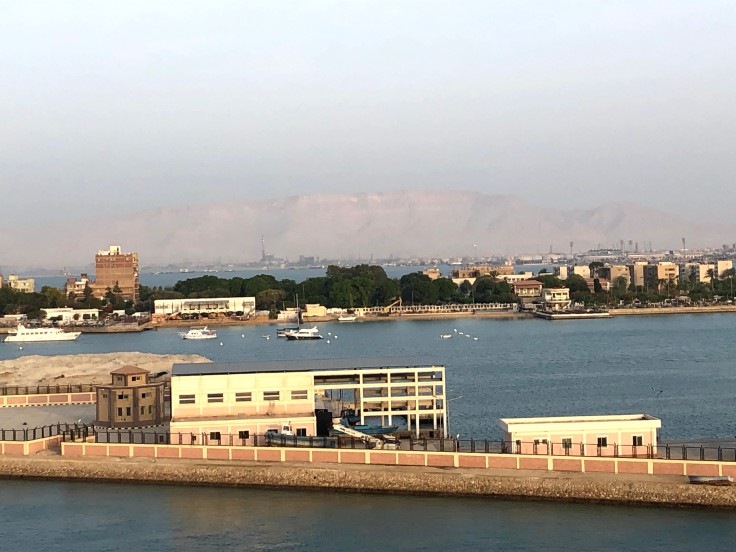
We were surprised to see so man buildings along the canal. 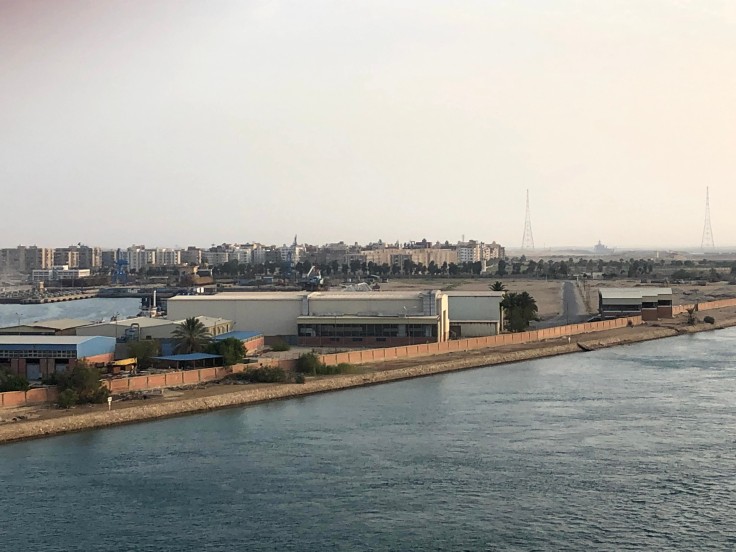
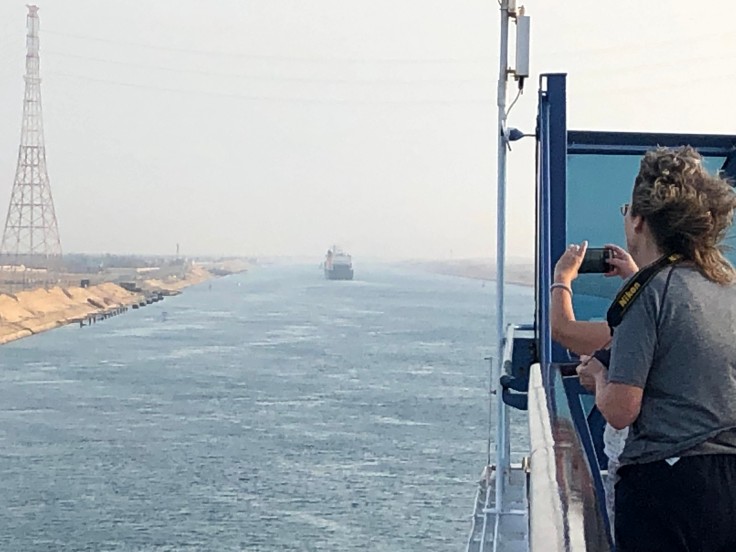
Ships ahead of us in the convoy… 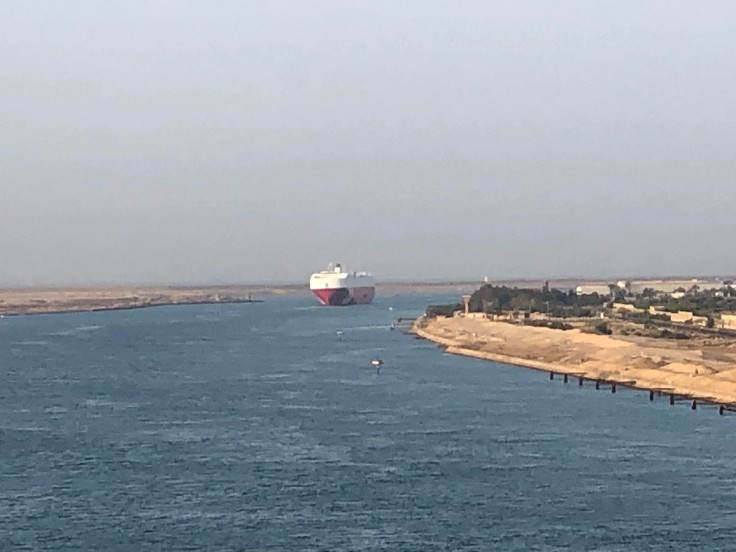
…and behind us. 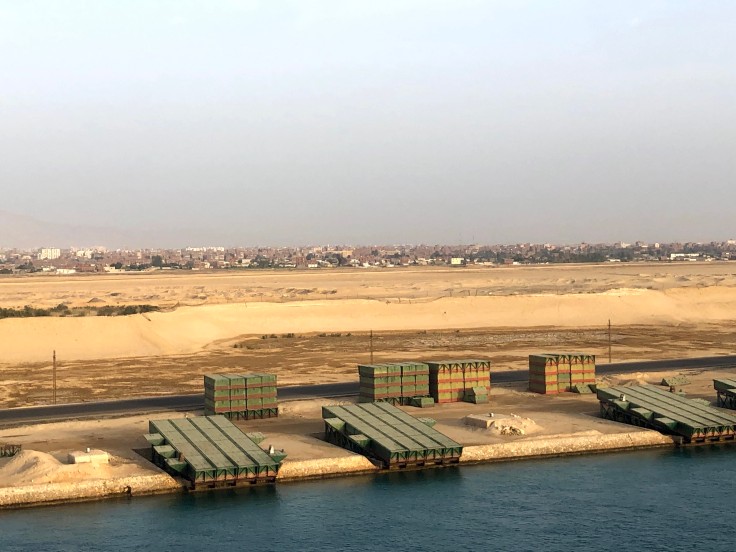
These barges are used to hold building materials for the Great Egyptian Dream. 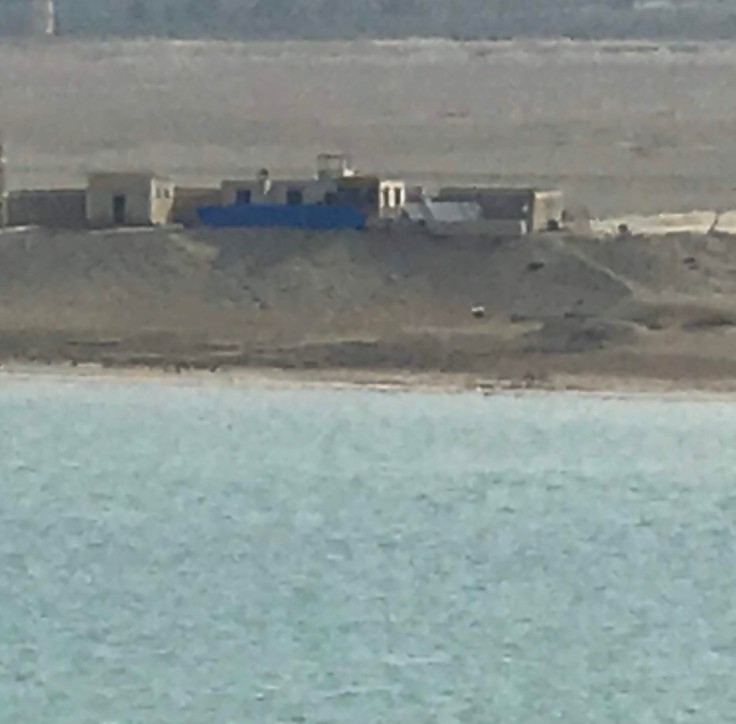
Part of the project has been completed. 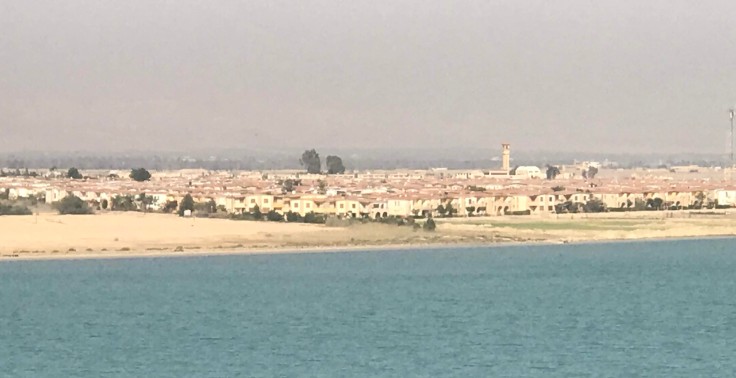
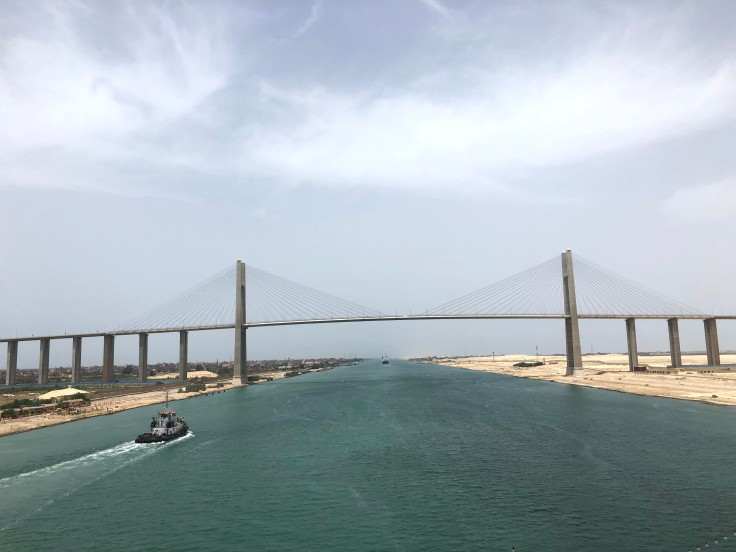
The Mubarak Peace Bridge 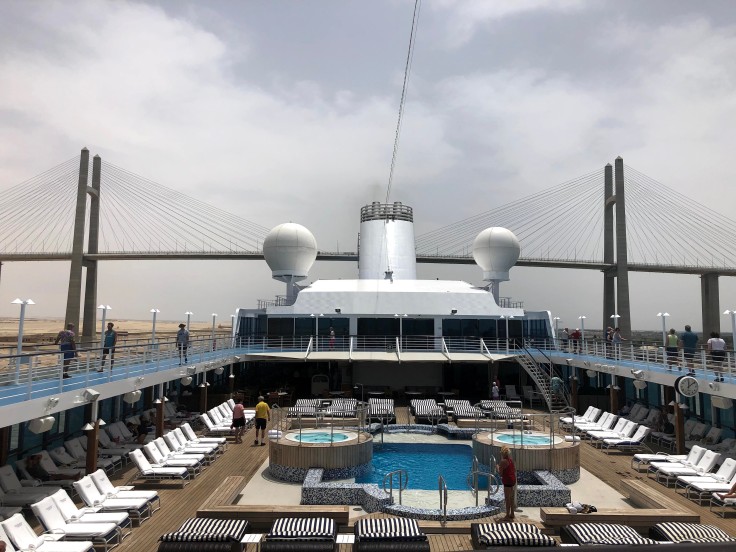
Preparing to go under the bridge. 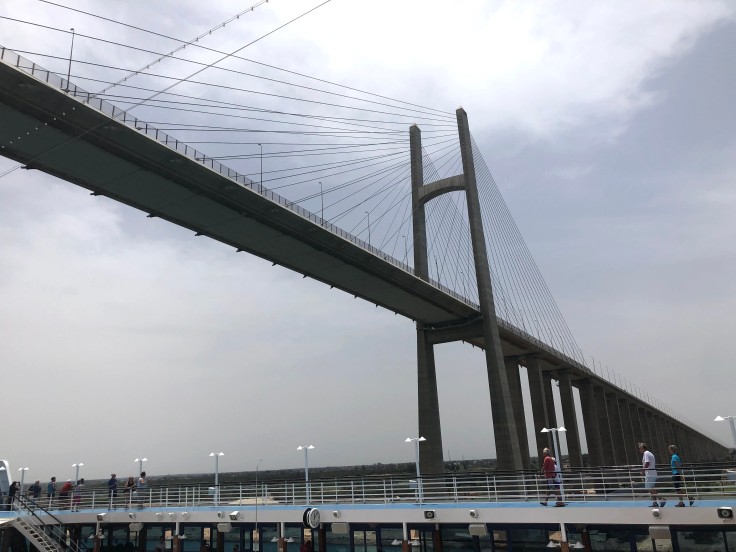
Going under 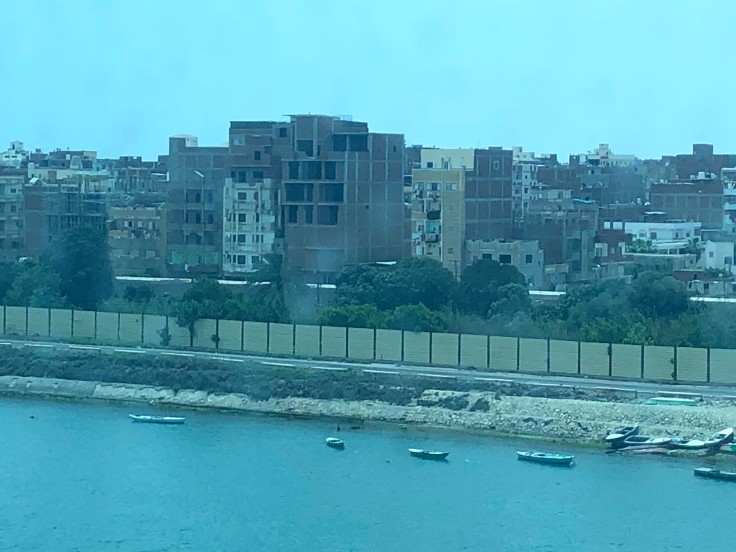
Towns along the canal 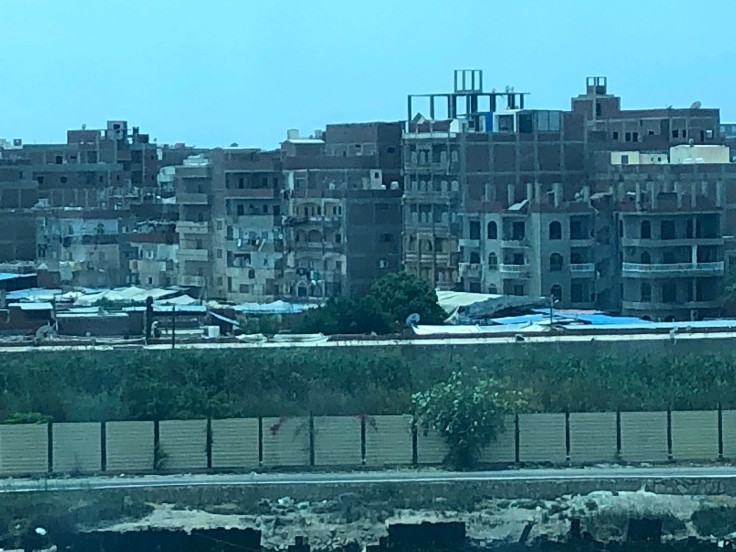


One of our many escorts 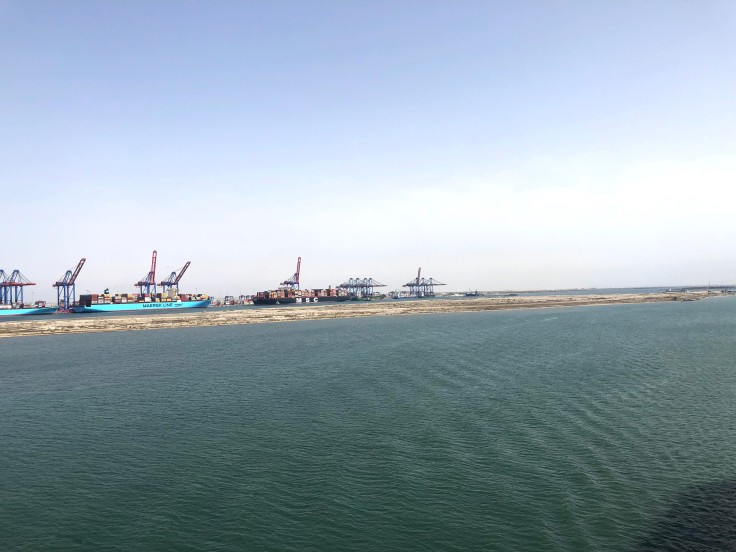
Construction, construction, construction… 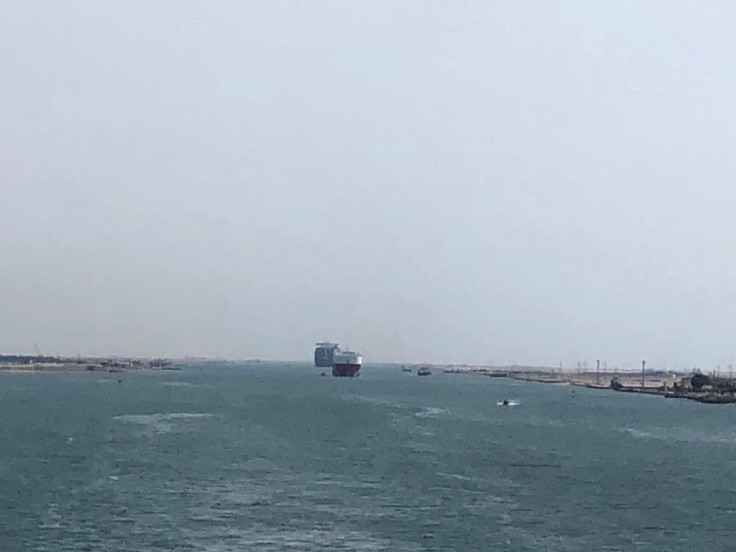
Leaving the canal
